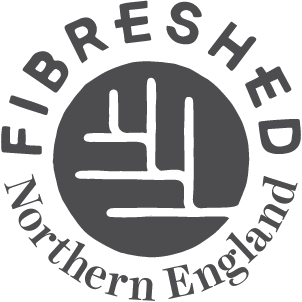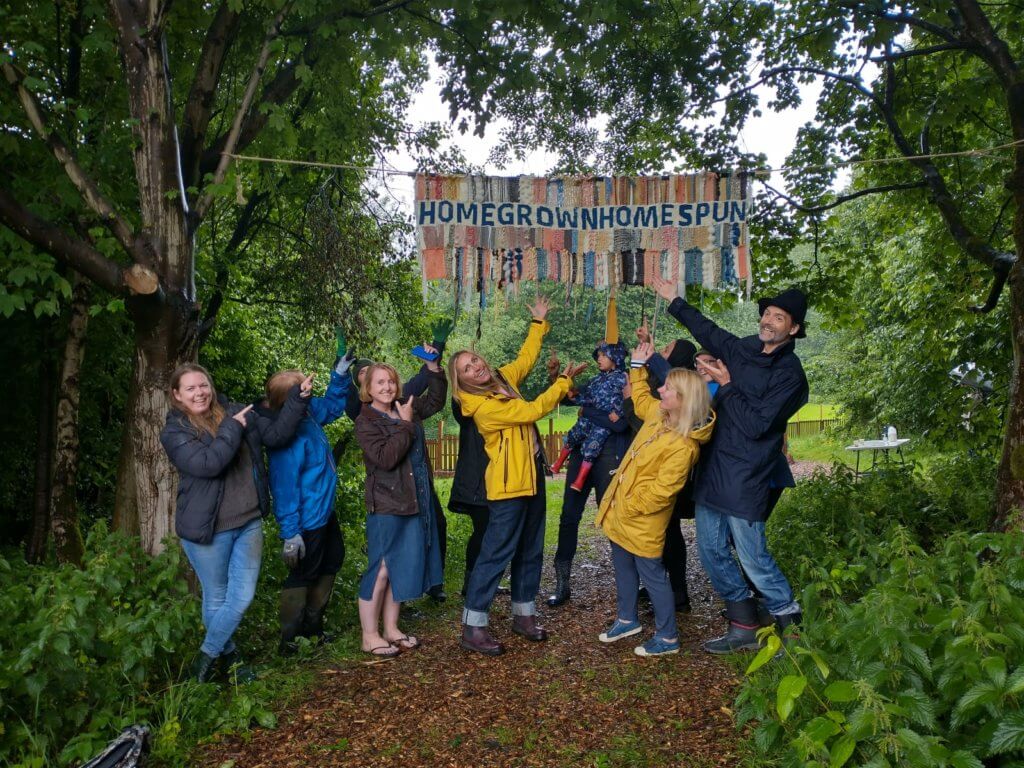
This article is a celebration of natural materials, the environment that produced them and the people who’s skills transformed them into a beautiful banner, on site at the Homegrown Homespun project in Blackburn recently. It’s a celebration of creative enjoyment, community spirit and the hope of a regenerated planet, but also a chance to reframe perceptions about the value of textile crafts.
With the announcement last May that the government plans to further cut arts funding to universities by 50%*, it’s evident that we’re in the midst of what Dr Vandana Shiva calls, a ‘monoculture of the mind’ – the valuing of subjects and occupations that perpetuate a Western academic, scientific and economic model. Just as we are experiencing a loss of biodiversity in the natural world due to humanity’s addiction to fossil fuels, so for many years, our educational curriculum and subsequent career choices have been narrowed and biased towards subjects that uphold our society’s current economic system – a system that is accelerating humanity towards climate breakdown.
With this crisis literally reaching fever pitch in many parts of the world, humanity urgently needs to divest from plastic/synthetic usage by choosing local, natural materials. It will take a multi-faceted approach to remedy these issues; top-down changes to international laws and governmental policies, and ground-up changes to educational curriculums and individual behaviour.
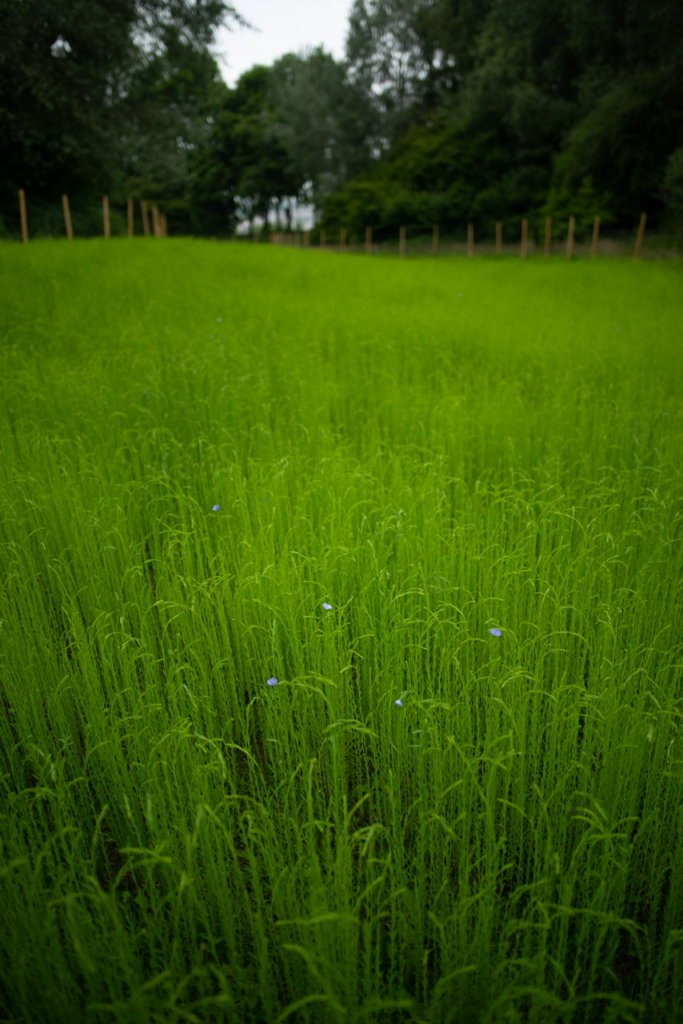
The Homegrown Homespun project (a collaboration between the N.W. England Fibreshed, Patrick Grant’s Community Clothing and the British Textile Biennial) seeks to contribute to this process by reintroducing flax and woad textile crops, sharing tuition in ‘field to fashion’ processing and tackling gaps in our skills and manufacturing infrastructure.
Textile crafts connect farms to fashion and people to natural materials, and textile education is crucial if we’re to reshore our industry and raise awareness amongst consumers about the difference between renewable and non-renewable materials. The Pre-Industrial gateway crafts of hand spinning, weaving and natural dyeing offer an insight into an era when humanity lived in closer connection with the natural environment. Practicing them builds a relationship with and reverence for the natural environment while invoking ancestral muscle memory that connects us to a time when people had more time. This feels inherently good and creates gentle opportunities to discuss the otherwise heavy topics of climate change and fast fashion, in a creative, hopeful way.
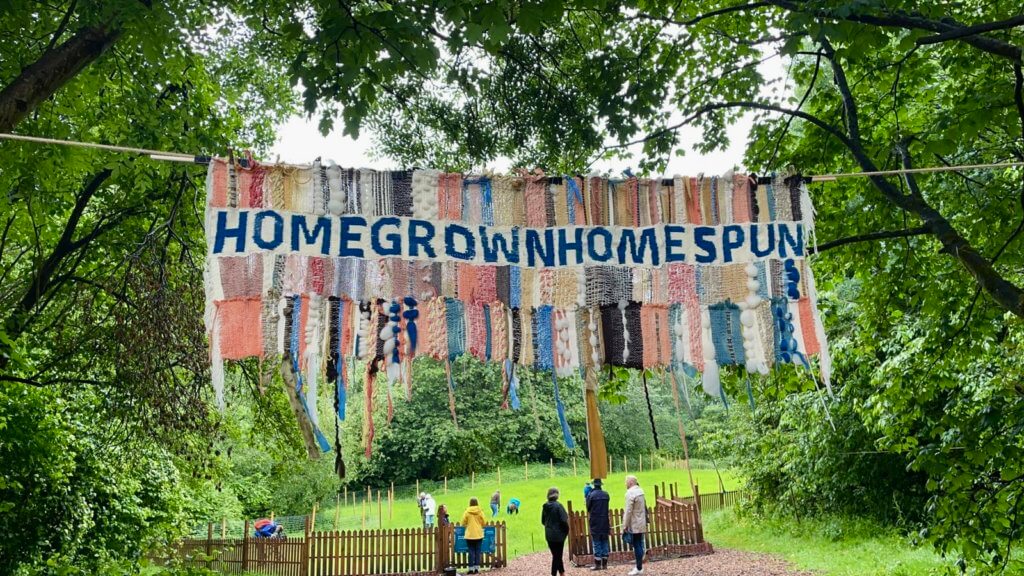
The Homegrown Homespun Community Banner
During the summer half term holiday in early June, the Homegrown Homespun team offered textile workshops to our dedicated volunteers. We’ve been so supported by the local (and not so local) community who’ve litter-picked, pruned, weeded and planted with us at our flax and woad growing sites in Lancashire during the last 3 months, it was a pleasure to share some of the crafts our ancestors would have used to turn fibre into coloured cloth.
The cloth envisaged was to be a community banner; hand spun, naturally dyed and woven outdoors over 3 days before being hung between our two guardian Sycamore trees at the entrance to the site in Blackburn. It was an ambitious plan given there was no running water, shelter or electricity available but as you see above, we manifest our vision!
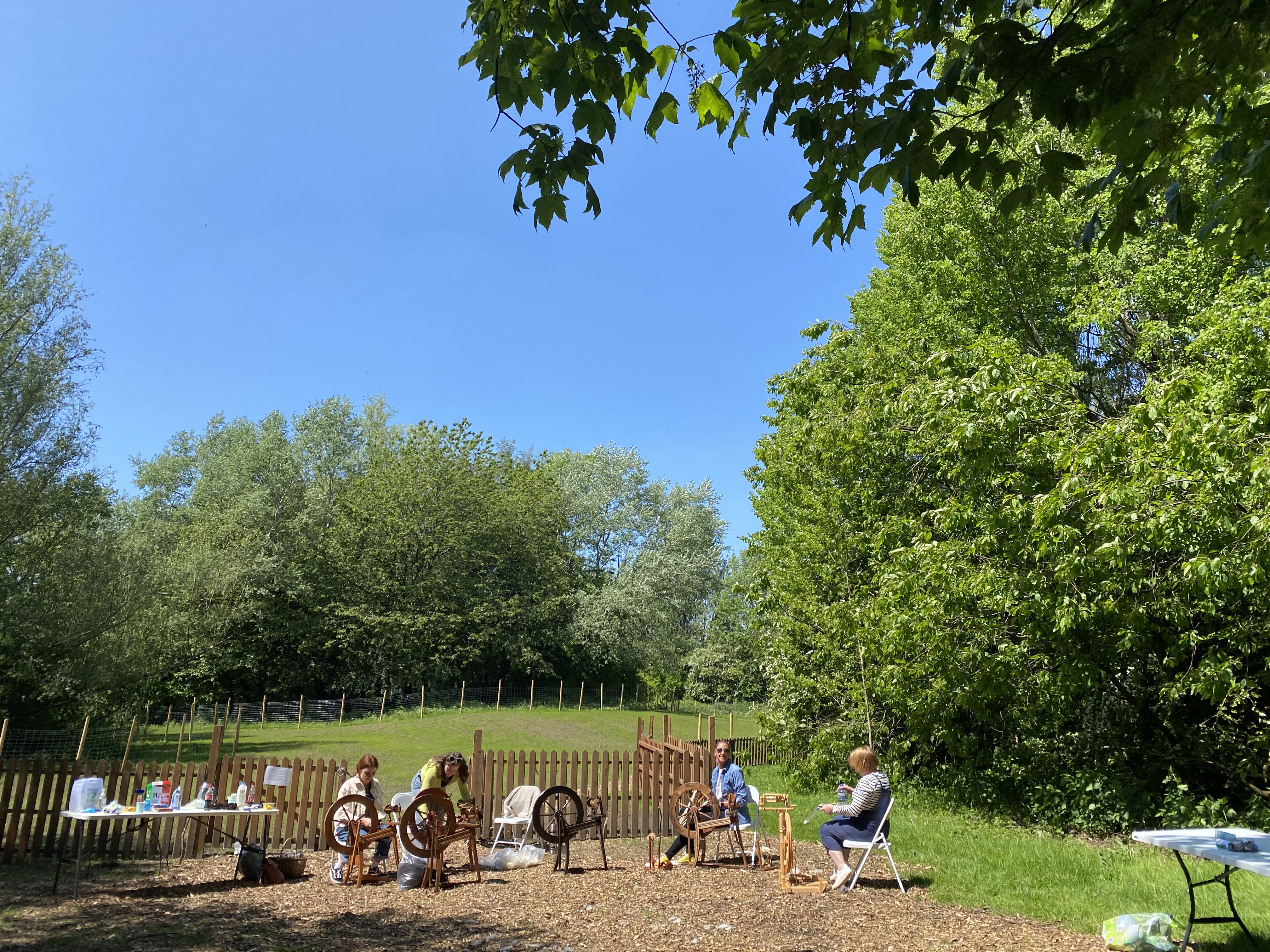
Day 1: Hand Spinning
I enlisted the help of Cathy Wright and her team at Lazy Kate Textiles to help us transform a bag of locally reared Blue Faced Leicester fluff into yarn for stage one of the task. We had the perfect weather conditions and surroundings enabling us to remain Covid-safe while gathering with others (a rare treat in itself), to enjoy some outdoor creativity.

The slow, repetitive movements required coordination and concentration which naturally shifts attention to the hands, away from the over-thinking mind. Many felt this was a tonic from the stress of their everyday routines and enjoyed the soundtrack of chatting and birdsong. To transform fluff into a usable thread required getting the feel of this natural material; it’s idiosyncrasies, it’s personality if you will – it involved developing a new skill, relationship with and respect for wool.
Inspired by Gandhi, who visited Lancashire 90 years ago, we experienced ‘swaraj’ – self rule (or sovereignty) and ‘swadeshi’ – the economics of place, while hand spinning. He coined these terms during India’s independence movement that sought to liberate his country from British rule in the 1930s and 40s.
At that time, cotton was exported from India to be processed into cloth in North West England, then sold back to India at extortionate prices. In protest, Gandhi encouraged Indian citizens to hand spin and weave for themselves, therefore empowering them to boycott British goods. This self-sufficiency decimated the textile-reliant East Lancs area, so on September 25th 1931, the mill-owning Davies family invited Gandhi to Darwen to see the poverty stricken region for himself.
Gandhi had great compassion for the employees, yet when he visited Garden Village – built by the Davies family for their mill workers – the poverty there didn’t compare with what he’d witnessed in his own country. He stuck to his boycott and India regained its independence from Britain.
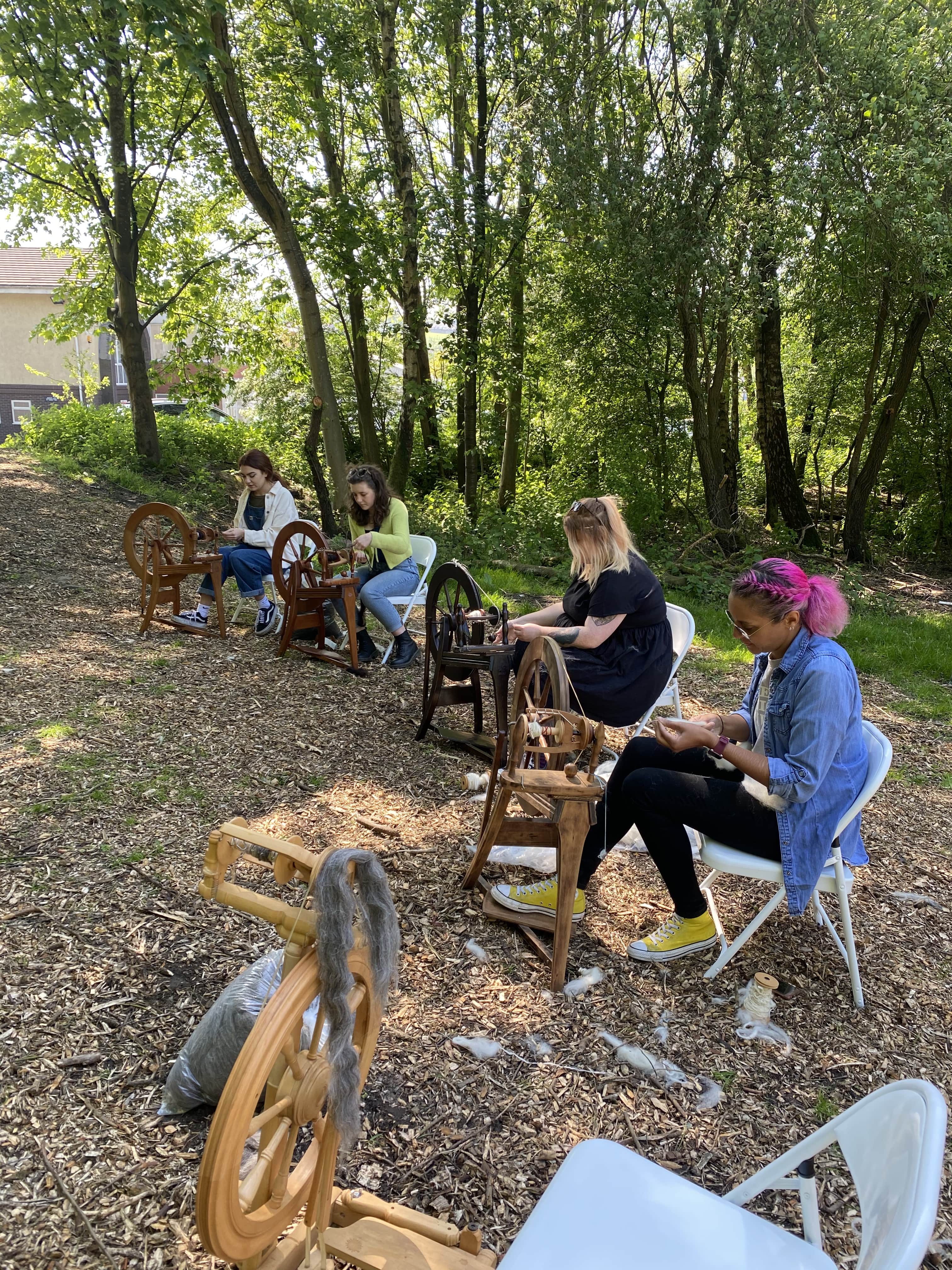
In seemed fitting to begin our week of workshops with hand spinning at a time when this country’s workforce needs reskilling if we’re to reshore our previously thriving industry here in the heartland of British Textiles.
In his brilliant book, ‘Soil, Soul, Society’, Satish Kumar asserts that “globalisation is the antithesis of swadeshi” and “the economy dependent upon long-distance import and export was an economy for profit and not for people.” He also emphasises that empowerment relies on working with the head, heart and hands and that our education must especially “give dignity to working with our hands.” An “exclusive emphasis on intellectual pursuits makes people dependent on goods produced far away. These goods have to be transported using enormous quantities of fossil fuels. As and when fossil fuels run out and people have lost the ability to make and manufacture, we will be extremely vulnerable.” – Satish Kumar
Humanity has always been hard-wired for self-sufficiency. Perhaps this is why it’s so rewarding and meaningful making something with your own hands. As passive consumers we are denied the self-esteem our own empowering skills create.
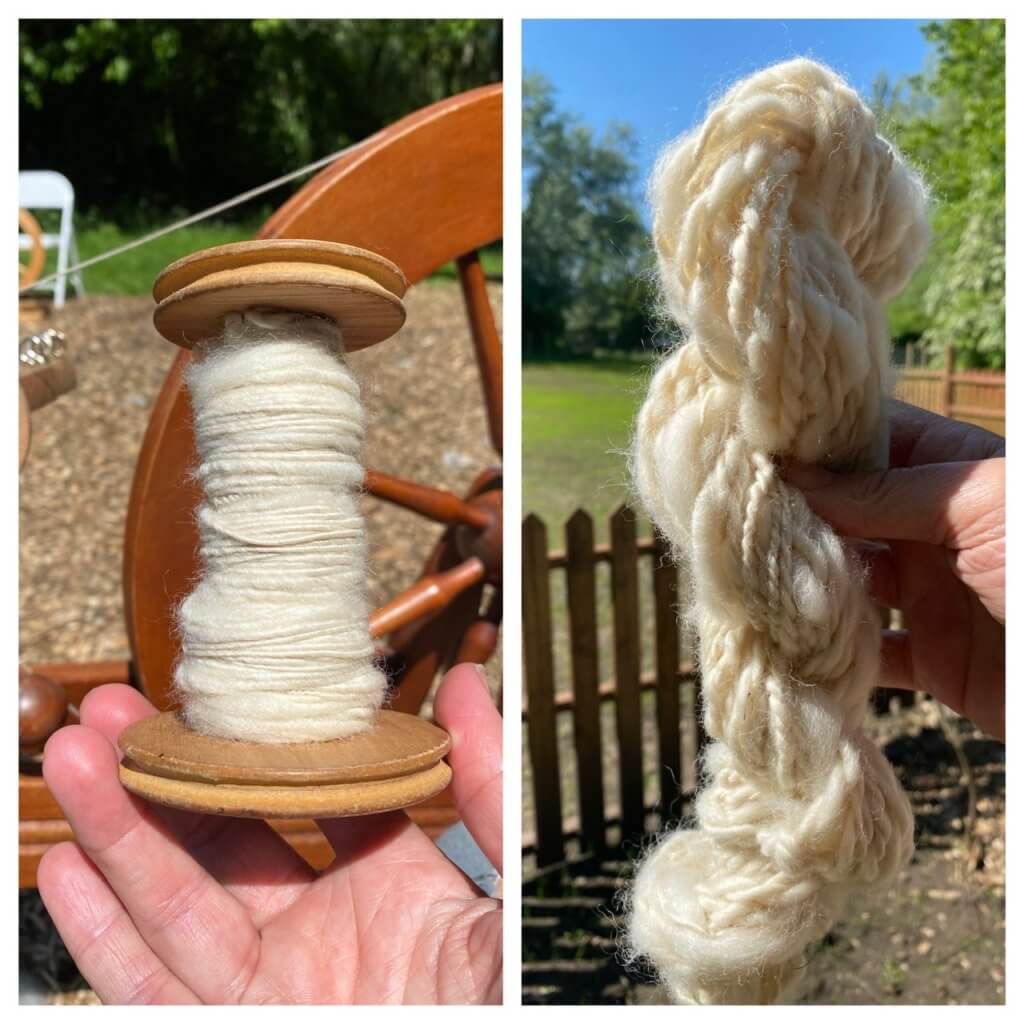
None of our participants had spun before yet somehow it resonated with all of us. Perhaps because not so long ago every household in the U.K. would have grown linen or reared sheep for wool and hand spun it into their own clothing and household textiles. During the era of subsistence farming, which almost completely died out after World War II, most families grew food and textile crops, so these new (to us) skills were a part of everyday life.
Day 2: Natural Dyeing
For the colour, it was over to me for stage 2: naturally dyeing our yarn. Everyone had a chance to tie-dye a tea towel using techniques inspired by the Japanese craft, shibori. We also had our hand spun wool from Monday to dye and I brought along an old cotton bedsheet to upcycle into fabric yarn which gave everyone chance to hone their patterning skills.
We toured the site foraging for local dye plants to add to our yellow and red pots supplied by the heritage dyes, weld (Reseda luteola) and madder (Rubin tinctorum.) We added Blackburn natives nettle, bramble, cherry and hawthorn leaves along with onion and pomegranate skins some of the attendees had been collecting, and rhubarb roots and chamomile flowers from my allotment crops last year.
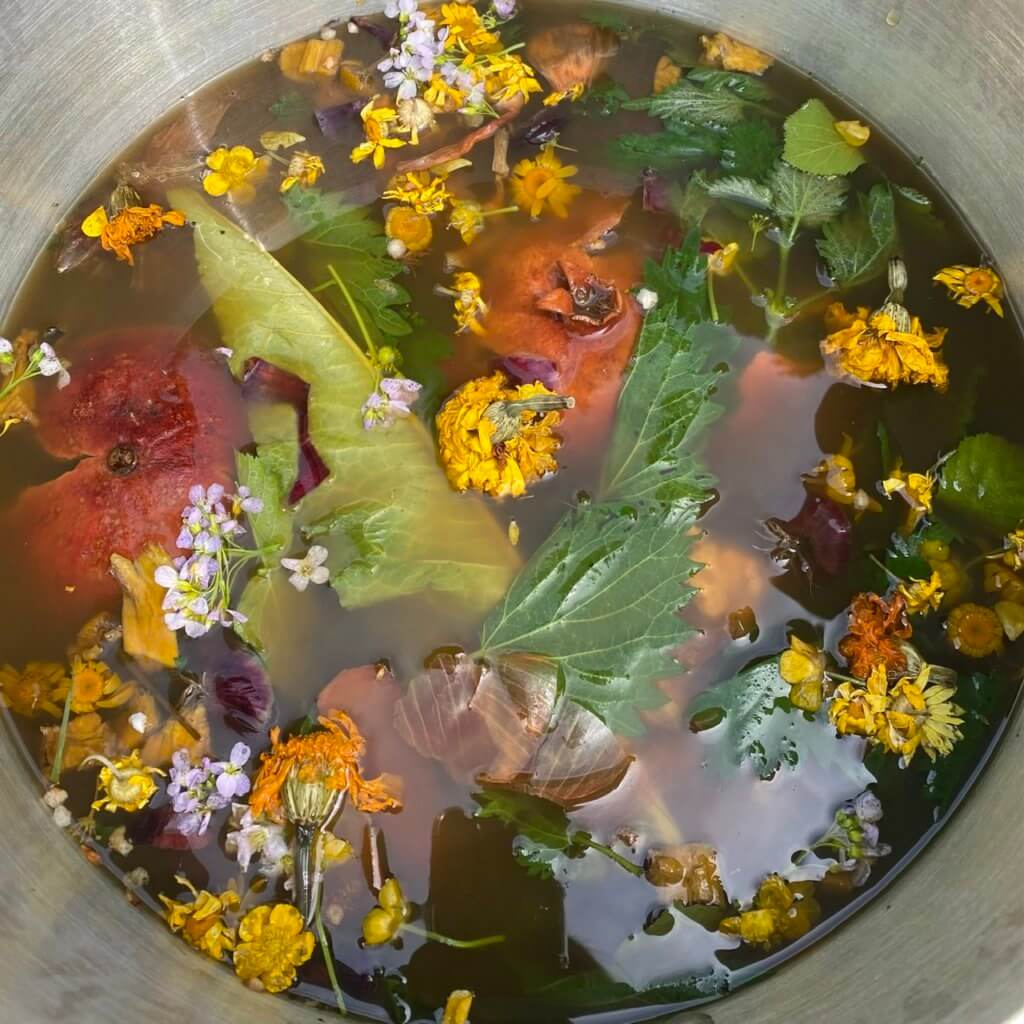
The moment of the big reveal, having waited patiently for bundled creations to cook, is always a thrill. Each pattern is unique and unrepeatable. During this fun process I shared a little about the ancient history of natural dyes, the effects of their more recent synthetic alternatives and how to use renewable colours to extend the life of home textiles and clothing rather than buying new.
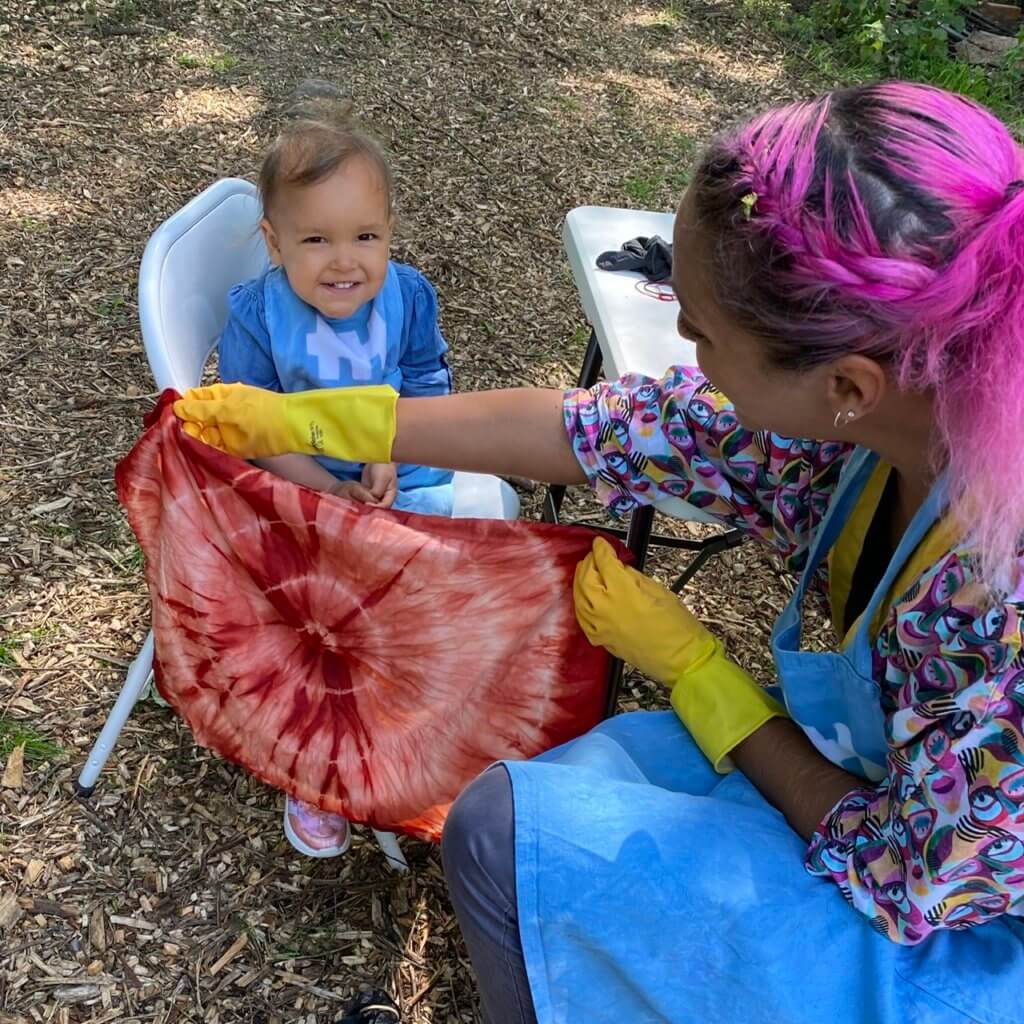
We tried itajime, a folded and clamped resist, ne-maki, utilising marbles and string to create circular patterns, arashi, a rain-effect design involving a drain pipe and freestyle creativity, using pure imagination and whatever was left lying around!
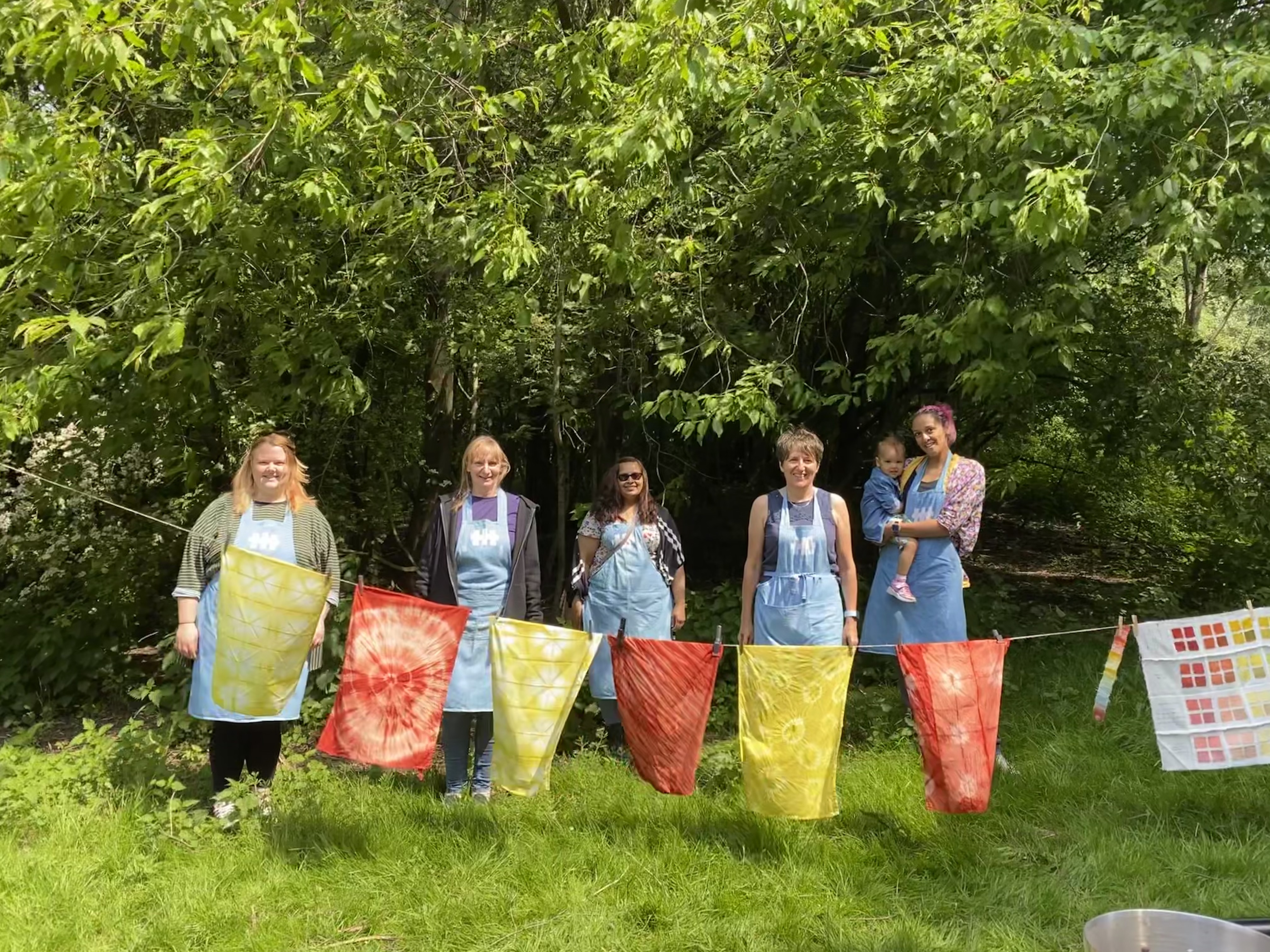
There is a luminosity you only experience with living, plant dyes and I’m pretty sure it can also be seen in the eyes of everyone who transformed a white tea towel into a psychedelically patterned and coloured one – which I’ve since heard are being made into more precious items because “they’re too good for dishes!”
The tea towels were to take home and keep but our hand spun yarn was dyed along with the extra cotton sheeting which would bulk out the final banner. As we had no running water on site, the extra panels were taken home to be rinsed, then torn into strips and twisted into rope.
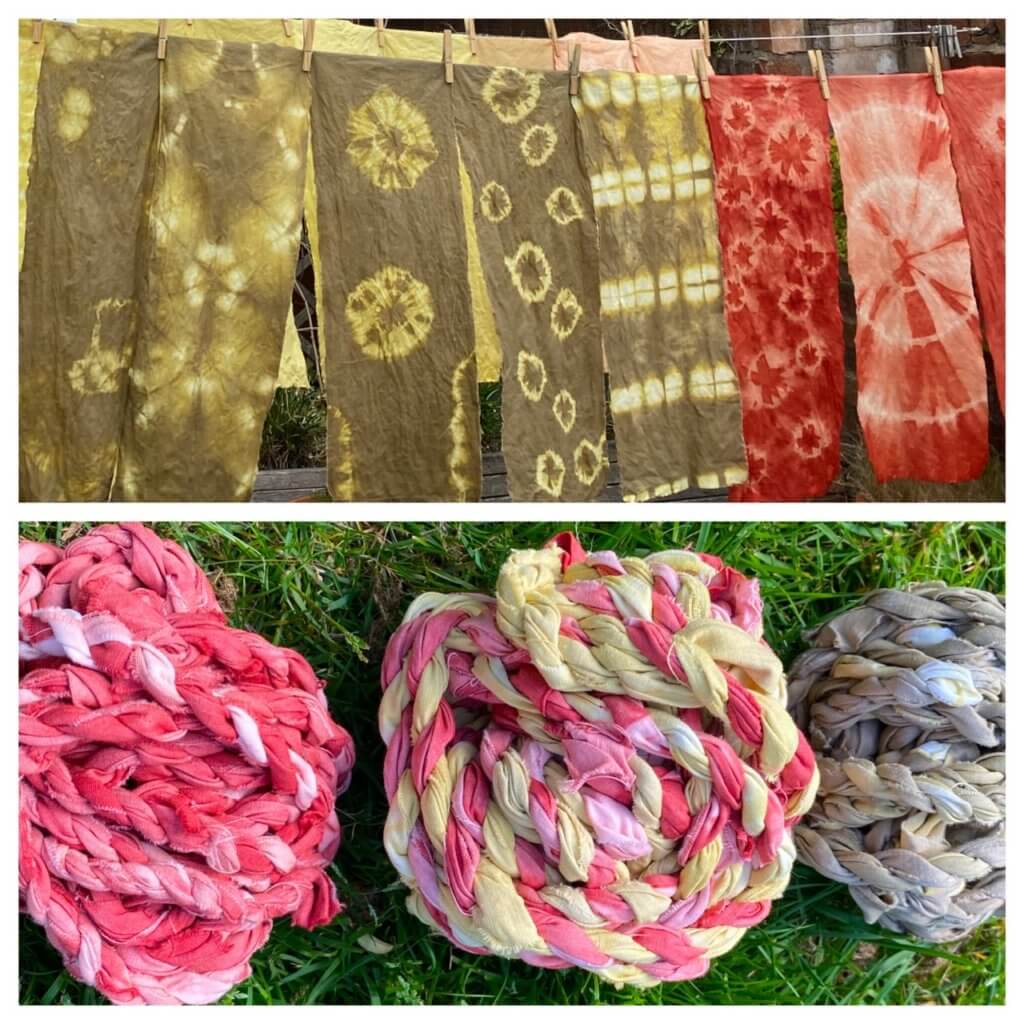
Day 3: Hand Weaving
Cathy, Jessamy and Sophia from Lazy Kate Textiles returned for our final day of half term workshops on Friday 4th June with 6 rigid heddle looms and 17 smaller looms with letter templates spelling out HOMEGROWN HOMESPUN. Some of our regular Friday volunteers were literally roped in to making fabric rope and once again we were blessed with glorious weather in the magical woodland oasis we’d created in the heart of the city.
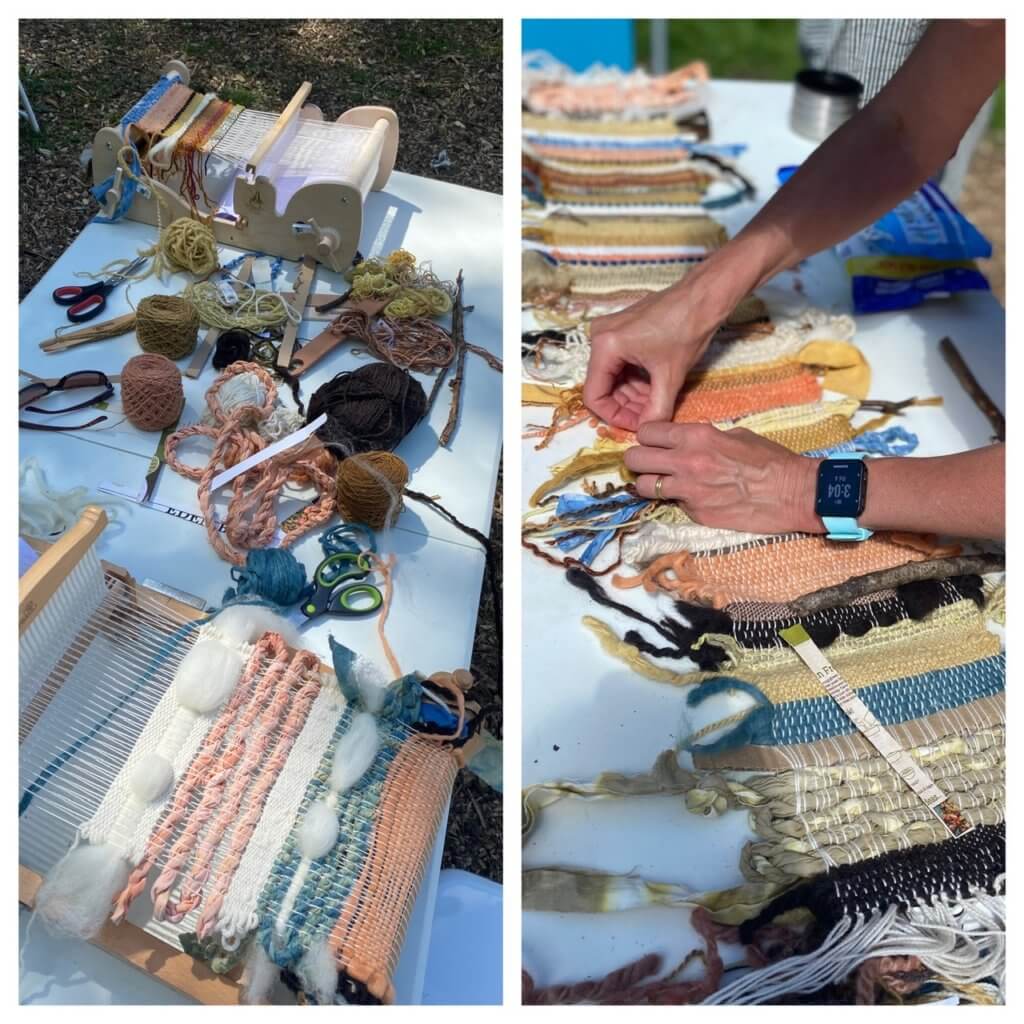
There was a real sense of investment in our mission with some participants returning from previous sessions. The enjoyment was palpable and some lovely new friendships made. In particular it was great to see our youngest team member and mascot, 2 year old Quinn gradually gaining the confidence to come out of her shell with this new group of people. We had great fun playing hide and seek while Mum Zara wove her own hand spun and dyed yarn into a panel. This is what our project is all about. Working together for a happier, healthier future and these workshops seemed to epitomise just that – a creative community enjoying the natural environment.
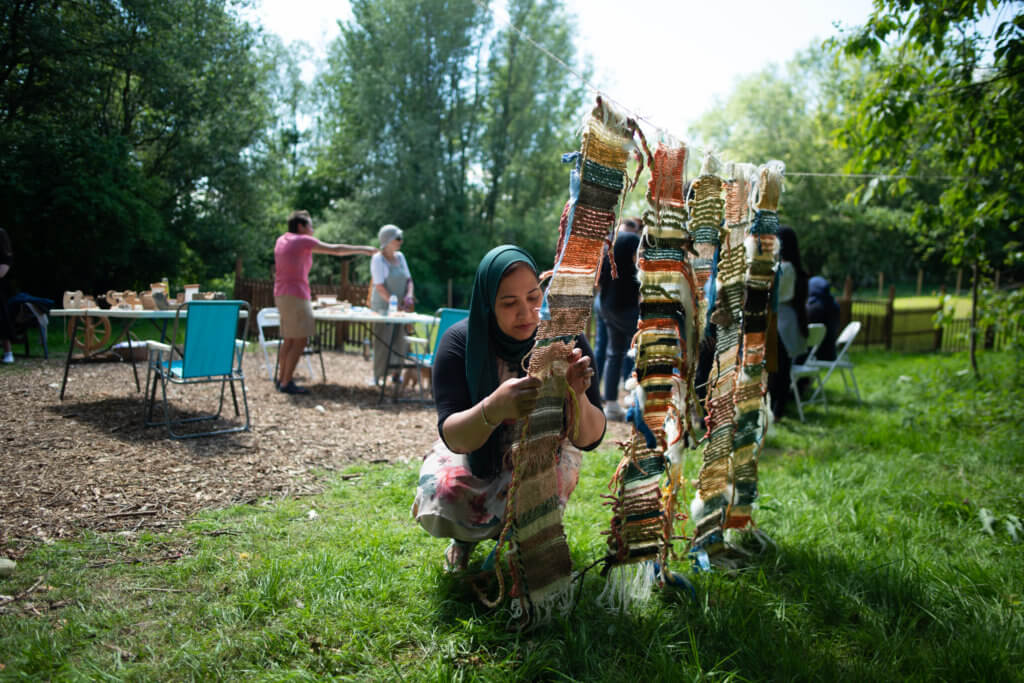
Image: Bea Davidson
These heritage crafts may be slow, therefore currently deemed commercially unviable but that’s their virtue in a system speeding towards ecological disaster. We must slow down (or preferably stop) the extraction of carbon releasing fossil fuels, our usage of polluting plastics (including synthetic fibres and dyes) and the pace of our consumption. Slow is good – and beautiful!
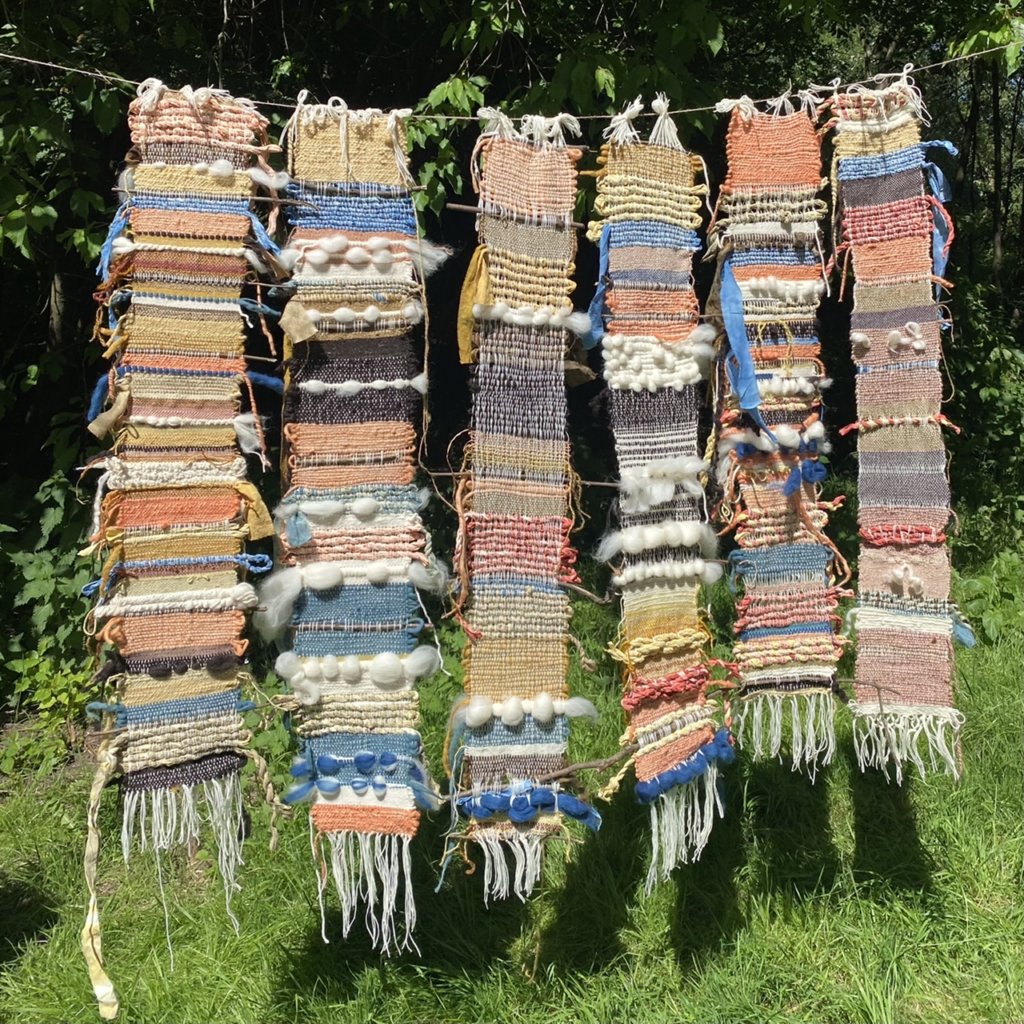
That said, with the power of community, in just 18 hours, over 3 days, we had hand spun, naturally dyed and hand woven 6 panels ready to be stitched into a banner. There’s so much love, joy and hope within the lovely colours and textures! The next task was to stitch 6 into one, avoiding the foraged twigs and including the woven letters. This was a task that couldn’t be shared with the community due to social distancing rules, so Cathy and I stepped in.

In ‘Earth Pilgrom’, Satish Kumar writes, ‘through making we transform matter, and in turn matter transforms us.” By spinning fluffy wool into yarn, we were transformed into spinners. By transforming lengths of yarn into a banner, we were transformed into weavers and by learning which plants produce colour on cloth safely, we were transformed into natural dyers.
Mechanisation was the boon of the Industrial Revolution. It sped up manufacturing, consumption of materials and generated immense wealth for some people. Yet many now realise that when machines replaced hand crafts, they deskilled, disempowered and disconnected people from their understanding of natural materials, nature and therefore themselves. Offshoring exacerbated this effect by removing so much manufacturing from this country’s consciousness, then a reliance on fossil fuel derived versions of our previously renewable materials caused climate breakdown.
We must urgently teach the next generation the value and importance of natural materials (and by association, the natural world) and to do this we must reinstate the creative arts and crafts of self-sufficiency. While we may never fully return to a hand made manufacturing system, these dexterous, empowering skills are crucial if we’re to inspire the next generation back into supporting a reshored textile industry.
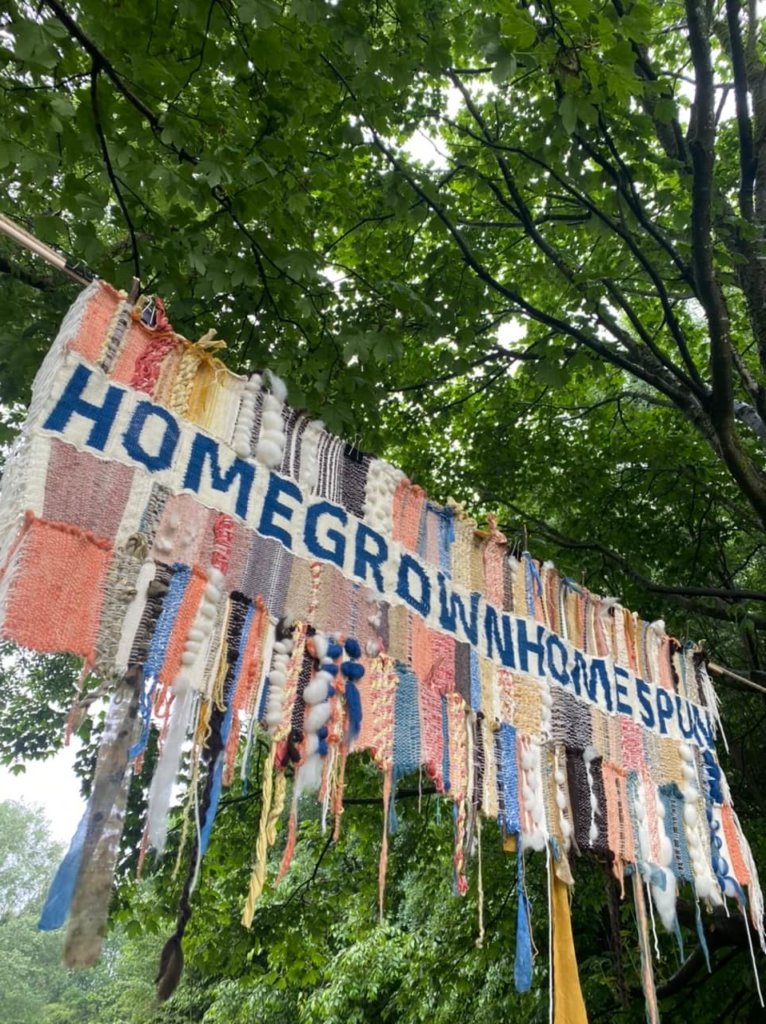
Our half term workshops were a way to say thank you to our dedicated team of volunteers who’ve braved all weather conditions to support the Homegrown Homespun project. Yet, they were also a way to highlight the value of the creative arts. The banner that emerged is a lovely example of the Fibershed motto, ‘local fibres, local dyes and local labour’ and highlights just how beautiful the regeneration of the planet can be.
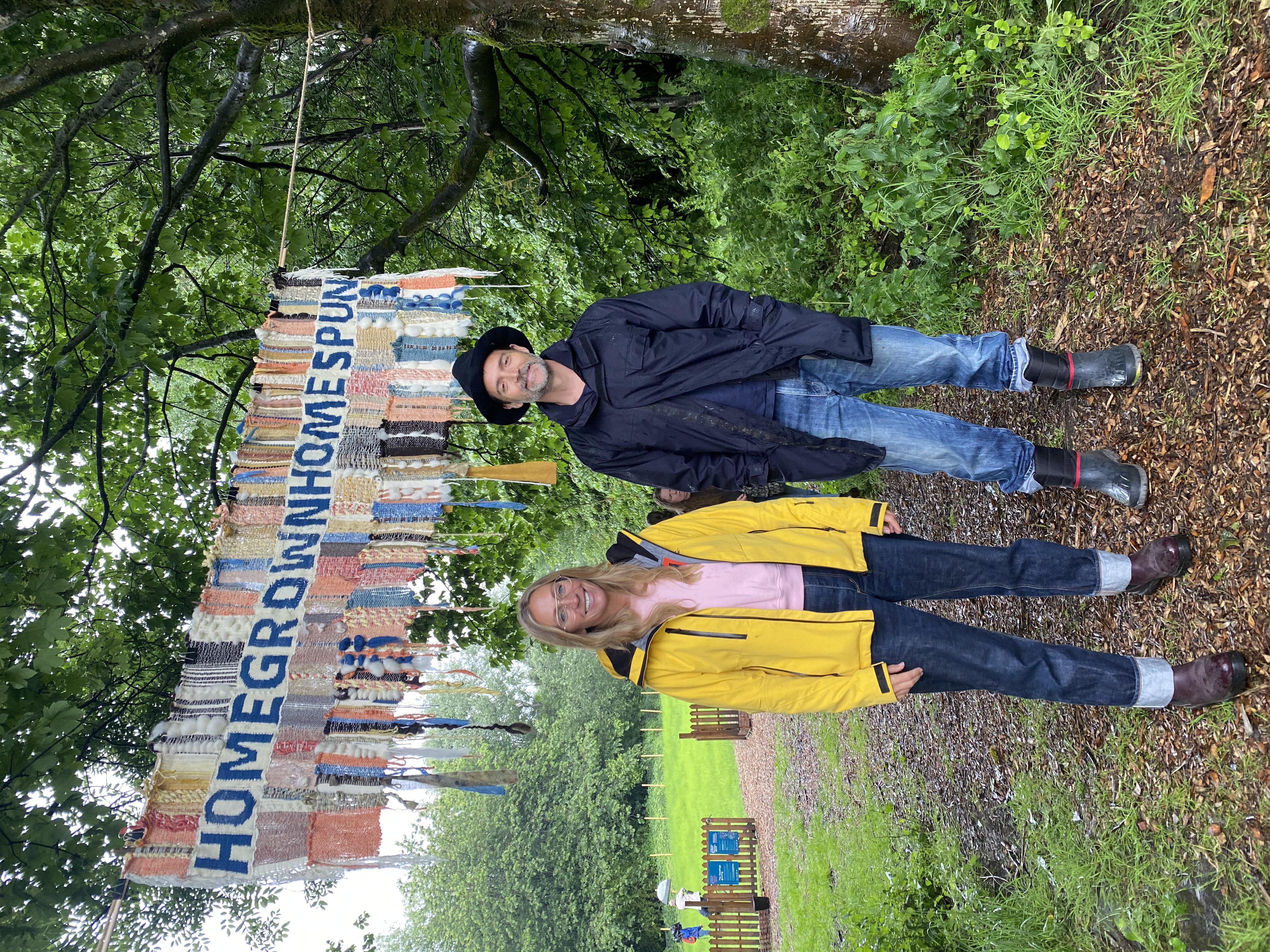
Justine Aldersey-Williams, July 2021.
Visit the Homegrown Homespun page for more articles about the project.
